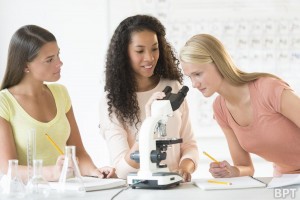Mentors wanted: How to guide more young women to success in STEM
 (BPT) – Careers in science, technology, engineering and math (STEM) are growing and quickly. By 2023, STEM will generate a projected 2.6 million new jobs, creating a high demand for qualified employees with STEM backgrounds in the coming years, according to Georgetown Public Policy Institute’s Center on Education and the Workforce.
(BPT) – Careers in science, technology, engineering and math (STEM) are growing and quickly. By 2023, STEM will generate a projected 2.6 million new jobs, creating a high demand for qualified employees with STEM backgrounds in the coming years, according to Georgetown Public Policy Institute’s Center on Education and the Workforce.
Despite attractive career opportunities for the next generation of STEM workers, the industry continues to be predominantly male. Women make up only 24 percent of the STEM workforce, the U.S. Department of Commerce reports.
Several programs nationwide are working to close the gender gap by encouraging participation among female students in STEM projects, activities and lessons early on in their education. DeVry University’s HerWorld is one such program. Its mission is to educate high school girls about STEM-related fields and connect them with real-life role models.
Throughout March, designated National HerWorld Month by DeVry University, thousands of young women will interact with their peers, learn from experienced women in high-visibility STEM careers, and participate in confidence-building activities and hands-on workshops at HerWorld events across the country.
“HerWorld was created 17 years ago to fill a need for programs that support and develop high school girls’ interest in STEM,” says Dr. Donna M. Loraine, provost/vice president of academic affairs at DeVry University. “While we have made great progress, our focus for HerWorld today is to encourage girls’ interest in these subjects in high school and beyond by connecting them with mentors who can show them that careers in STEM are challenging but realizable.”
One-third of women who enter STEM bachelor’s degree programs after high school switch their major to a non-STEM field by the time they graduate, according to a study by the U.S. Department of Education and National Center for Education Statistics. Demonstrating to teenage girls that there are women who will support them through their journey in STEM is an important part of HerWorld’s objective.
This year for National HerWorld Month, DeVry University is partnering again with Mayim Bialik, best known for her television roles on “The Big Bang Theory” and “Blossom.” The renewed partnership between Bialik and DeVry is a natural fit given Bialik’s own STEM background: she earned her Doctorate of philosophy in neuroscience in 2007.
“My biology tutor on the set of ‘Blossom’ was a tremendously significant mentor for me, inspiring me to look at science and my academic skills in a different way,” says Bialik. “Though I am currently employed primarily as an actress and not a neuroscientist, I still benefited from a role model showing me what I could achieve in the sciences. I think young girls today deserve the same thing and I want to give them the confidence they need to succeed in STEM.”
The STEM industry has garnered national attention recently, most notably in President Obama’s 2014 State of the Union Address.
“Teachers and principals in schools from Tennessee to Washington, D.C. are making big strides in preparing students with skills for the new economy – problem solving, critical thinking, science, technology, engineering, and math,” says President Obama. “Some of this change is hard. It requires everything from much more challenging curriculums and more demanding parents to better support for teachers and new ways to measure how well our kids think, not how well they can fill in a bubble on a test. But it’s worth it – and it’s working.”
HerWorld is part of this national momentum. Bialik and guest speakers who are role models from a variety of STEM backgrounds will show high school girls how they can apply their skills and intelligence to unique and interesting careers in STEM. Programs like HerWorld address a vital need to provide girls interested in STEM with mentors who can guide and motivate them throughout their educational and professional journeys. Closing the gender gap requires opening the eyes of the next generation to the many possibilities in STEM, and no one can do that better than the women who have seen their own aspirations come to fruition.